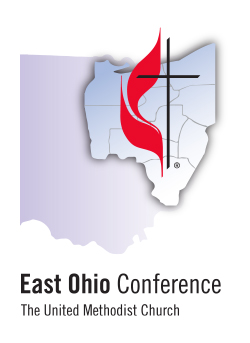East Ohio Conference Re-Districting Proposal to Annual Conference 2023
“Flexibility, Creativity, Courage”
Considering rapid changes in our church and culture, Bishop Tracy S. Malone convened a task group to look at current trends and consider how to best address these realities. The primary task of this group was to study these realities and recommend how many districts are needed in the East Ohio Conference to address these trends and to best position Conference laity and clergy to live into our shared vision and mission. Bishop Malone introduced the process for redistricting in February 2022. Per ¶ 415.4 of The Book of Discipline of The United Methodist Church 2016, the bishop and district superintendents will “form the districts, after the number of the same has been determined by vote of the Annual Conference.”
Following the action of the 2023 East Ohio Annual Conference to determine the number of districts Bishop Malone and the Cabinet will work to develop new boundary lines at their September meeting. The goal is for new districts to be in place on January 1, 2024.
The task group that studied the current district structure of the East Ohio Conference and provided a written recommendation to Bishop Malone and the Cabinet was comprised of a diverse group of clergy and laity from across the East Ohio Conference. The work of the task group was guided by these three values: flexibility, creativity, and courage.
Flexibility
The number of districts should provide as much flexibility as possible to the gifted lay and clergy leaders of the East Ohio Conference so that they best utilize both our people resources and our financial resources in moving one step closer to living into our shared vision and mission. Redistricting will provide flexibility in Conference and district structures and best position us to be good stewards of people’s time, gifts, and energy so that more financial resources will be available for ministry in the local church.
Creativity
When East Ohio Conference pastors, congregations, and faith communities have flexibility in how vital resources can be used it will free all to be more creative in ministry. One way this creativity has been modeled over the past year has been demonstrated in new models for superintendency. The hope is that these new models will better position districts to be able to more effectively resource and equip churches to make disciples of Jesus Christ for the transformation of the world. It is the local church that is the primary place for disciple making and each district is a key grassroots connection for resourcing this primary mission. With more resources at the grass roots level, churches can increase capacity to engage in ministry with their neighbors and communities.
Courage
The task group agreed that with the rapid changes in our church, and culture, it is time to make a bold and courageous change to adapt to these realities. This adaptive change is being proposed so that local churches will feel empowered to expand the transformational ministries that are impacting communities across the State of Ohio. Reducing the number of districts is a courageous way for the East Ohio Conference to be more flexible with resources and more creative missionally so that pastors, congregations, and faith communities can continue to live into our shared vision of reaching new people, younger people, and more diverse people.
Proposal
After receiving and reviewing the report from the task group, the East Ohio Conference Cabinet makes the proposal to the Annual Conference to reorganize around four districts. The Cabinet believes redistricting in this way will empower the East Ohio Conference to be more flexible, creative, and courageous in living into the principle that districts and conferences exist to support the local church. Following Annual Conference action, the next step per ¶ 415.4 of The Book of Discipline of The United Methodist Church is for the bishop and Cabinet to work together to draw the district boundaries.
Questions
How will redistricting affect the conference budget and local church apportionments?
All indicators are that this proposal will continue to move us in the direction of lowering the Conference budget, so that more dollars are kept in the local church for mission and ministry.
Will there still be district offices?
District staff play a key role in helping to resource and supporting pastors and local churches. There will continue to be district offices but the form of those offices – be they brick and mortar or remote – is yet to be determined.
How often will we see the district superintendent?
Over the last year, different models for superintendency were piloted. With fewer districts, we will continue to utilize models that ensure clergy and churches receive care and support. You will see your district superintendent as often as you currently do.
How will it be determined who will be in leadership in the new districts?
There will be a time of transition for leadership as the district governance structure will also be shifting. There will be discussion with current leaders about this transition. Those who are willing and able to continue to serve in the new districts will be considered for nomination.
How many churches will be in each district?
The exact number of churches is difficult to determine currently. Several factors will be considered when defining district boundaries such as missional needs, county lines, school districts, and population growth.
Who decides the names of the new districts?
The bishop and the East Ohio Conference Cabinet will solicit input from Conference members in a collaborative process to determine the names of the new districts.
East Ohio Conference laity and clergy participated in an informational webinar May 22 to learn more about the re-districting proposal that will be presented to Annual Conference 2023. Participants had the opportunity to submit questions in advance and to ask questions during the webinar, which was recorded and is available for viewing by clicking on the video below.

